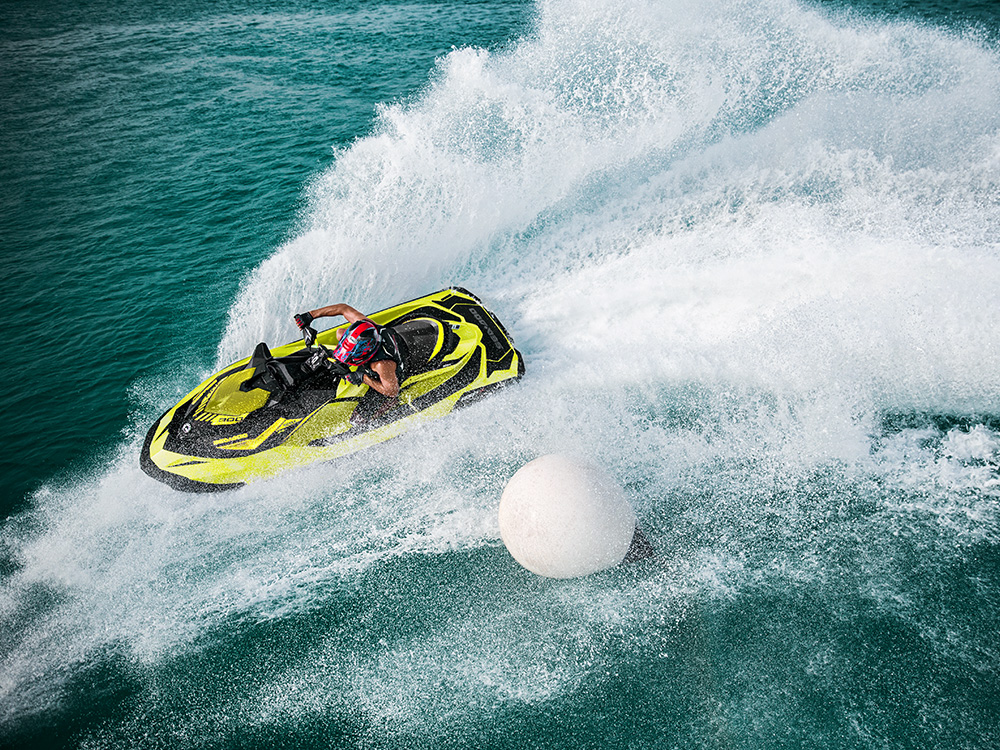Uncategorized
Guide to Sea-Doo Insurance: Everything You Need to Know
Owning a Sea-Doo, also known as a personal watercraft (PWC), is a thrilling experience for water sports enthusiasts. Whether you’re zipping across the waves or enjoying a leisurely ride, Sea-Doo brings a sense of adventure. However, like any other vehicle, owning one comes with responsibilities, and insurance is one of the most important.
In this comprehensive guide, we’ll walk you through the essentials of Sea-Doo insurance, why you need it, what it covers, how much it costs, and tips for getting the best coverage. If you’re a first-time buyer or an experienced rider looking to better understand your insurance options, this guide will provide clear and reliable information.
Why Do You Need Sea-Doo Insurance?
Many people assume that since a Sea-Doo is smaller than a boat, it doesn’t need insurance. However, this assumption can be costly. Just like a car or a boat, a personal watercraft (PWC) faces various risks while on the water, such as:
- Accidents: Collisions with other vessels, swimmers, or even docks.
- Damage: Weather conditions, vandalism, or theft can damage your Sea-Doo.
- Liability: If you’re involved in an accident that causes injury to another person or damage to property, you could be held responsible.
Sea-Doo insurance offers protection against these risks, ensuring that you’re financially covered if anything goes wrong. Without insurance, the costs of repairs, medical bills, and legal fees could quickly add up, leaving you in a difficult situation.
Legal Requirements
While not all states or countries mandate Sea-Doo insurance, many places do have minimum requirements. Even if it’s not legally required in your area, marinas and storage facilities might require proof of insurance before allowing you to dock or store your PWC. It’s always a good idea to check your local regulations and ensure you’re compliant.
Peace of Mind
Beyond legalities, insurance gives you peace of mind. Whether you’re a casual weekend rider or someone who takes your Sea-Doo out frequently, knowing that you’re covered helps you enjoy your time on the water without worrying about the unexpected.
What Does Sea-Doo Insurance Cover?
Sea-Doo insurance coverage can vary depending on the provider and the policy you choose. However, most policies offer a few common types of protection. Here’s a breakdown:
Liability Coverage
Liability insurance covers you in case you’re responsible for an accident that results in injury to another person or damage to their property. It helps pay for medical expenses, repairs, and even legal fees if you’re sued.
- Bodily Injury Liability: This part of your policy helps cover medical bills and lost wages if someone is injured in an accident you’re responsible for.
- Property Damage Liability: Covers the cost of damages if you hit another watercraft, a dock, or other property.
Collision Coverage
If your Sea-Doo is damaged in a collision with another boat, object, or even while it’s being transported on land, collision coverage helps pay for repairs. This is particularly useful in the case of accidental damage where you’re at fault.
Comprehensive Coverage
This protects your Sea-Doo from non-collision-related incidents such as theft, vandalism, or damage from natural disasters like storms or floods. If your PWC is stolen or destroyed, comprehensive coverage can help replace or repair it.
Uninsured/Underinsured Boater Coverage
Just like with car insurance, some boaters may not have insurance, or their coverage may not be enough to cover the costs of an accident. Uninsured/underinsured boater coverage helps protect you if you’re involved in an accident with someone who doesn’t have adequate insurance.
Medical Payments Coverage
Medical payments coverage helps pay for medical expenses for you and your passengers in case of an accident. Even minor injuries can lead to expensive hospital bills, so this coverage is essential for safeguarding your finances.
Towing and Assistance
If your Sea-Doo breaks down while you’re out on the water, towing and assistance coverage helps cover the cost of getting your PWC towed to shore. This coverage also often includes services like fuel delivery or mechanical assistance.
Personal Effects Coverage
Some policies offer additional coverage for personal belongings that you bring on board, such as phones, cameras, or fishing gear. If these items are damaged or stolen, this coverage helps compensate for your loss.
How Much Does Sea-Doo Insurance Cost?
The cost of Sea-Doo insurance varies based on several factors. On average, policies can range from $150 to $500 per year, but your premium will depend on a number of key elements, including:
Factors Influencing the Cost
- Value of Your Sea-Doo: The more expensive your watercraft, the higher your insurance premium will be.
- Your Location: Areas with higher rates of boating accidents or theft may have higher premiums.
- Usage: How often and where you use your Sea-Doo matters. Frequent users or those who ride in risky areas may pay more.
- Driving Record: Your personal driving record and any past boating accidents can influence your rate. A clean record can help lower your premium.
- Coverage Level: The more comprehensive your coverage, the more you’ll pay. Opting for higher liability limits or additional protections like towing will increase the cost.
Ways to Save on Sea-Doo Insurance
- Bundling Policies: Many insurers offer discounts if you bundle your Sea-Doo insurance with other policies, like car or home insurance.
- Safety Courses: Taking a boating safety course can reduce your premium by showing insurers that you’re committed to safe riding practices.
- Increase Deductibles: Opting for a higher deductible means you’ll pay more out of pocket in the event of a claim, but it can lower your annual premium.
- Seasonal Usage: If you only use your Sea-Doo during certain months, some insurers offer seasonal policies that allow you to pay only for the months when you’re using the PWC.
Choosing the Right Sea-Doo Insurance
With various insurance providers offering Sea-Doo policies, choosing the right one can be overwhelming. Here are a few tips to help you make an informed decision:
Research and Compare
Start by researching several insurance providers that specialize in watercraft coverage. You can either do this online or contact an insurance broker who can provide personalized quotes. Be sure to compare the following factors:
- Price: While it’s tempting to go for the cheapest policy, make sure it offers adequate coverage for your needs.
- Coverage Options: Ensure the policy covers all potential risks, including liability, theft, and damage.
- Customer Service: Read reviews or ask friends for recommendations on insurance companies with good customer service, especially when it comes to handling claims.
Review the Policy Details
Make sure you read the fine print of any insurance policy. Check the limits on liability coverage, deductibles, and whether personal items like fishing gear or phones are covered.
Ask Questions
Before purchasing a policy, don’t hesitate to ask your insurance agent questions. Some important questions to consider include:
- What is the claims process like?
- Are there restrictions on where I can operate my Sea-Doo?
- What happens if I let someone else drive my Sea-Doo and they have an accident?
Common Mistakes to Avoid When Buying Sea-Doo Insurance
When purchasing Sea-Doo insurance, there are a few common mistakes that you should avoid:
1. Not Getting Enough Liability Coverage
While it might be tempting to save money by opting for the minimum liability coverage, this can leave you vulnerable in the case of a serious accident. Medical bills and property damage can quickly exceed the minimum coverage, leaving you to cover the difference out of pocket.
2. Ignoring Policy Exclusions
Some insurance policies have exclusions that limit coverage in certain situations, like racing or operating in restricted waters. Always read through the exclusions to avoid surprises.
3. Failing to Update Your Policy
If you make modifications to your Sea-Doo or purchase a new one, you should update your policy to reflect the changes. Failure to do so could result in your Sea-Doo being underinsured or even not covered in the event of an accident.
Filing a Sea-Doo Insurance Claim: What to Expect
In the unfortunate event that you need to file a claim, knowing the process can help reduce stress. Here’s what you should typically expect:
1. Report the Incident
As soon as possible after an accident, theft, or damage, report the incident to your insurance provider. Be prepared to provide details like:
- The time, date, and location of the incident.
- A description of what happened.
- Any photos or evidence that can support your claim.
2. Provide Documentation
Your insurance company will ask for documentation such as repair estimates, police reports (if applicable), and medical bills. Keeping detailed records of everything can help speed up the process.
3. Wait for Assessment
The insurance company may send an adjuster to assess the damage to your Sea-Doo. They will determine how much the insurance company will pay based on your coverage and the extent of the damage.
4. Claim Settlement
Once the claim is approved, you’ll receive payment for the covered costs, minus any deductibles. If your Sea-Doo was stolen or totaled, you may receive a check to help cover the replacement cost.
Conclusion
Owning a Sea-Doo is an exhilarating way to enjoy the water, but it also comes with responsibilities. Having the right insurance ensures that you’re protected from financial losses in the event of an accident, theft, or damage. Whether you’re a seasoned rider or new to personal watercraft, it’s crucial to understand the coverage options available and choose a policy that fits your needs.
By being proactive, comparing policies, and knowing what to expect, you can enjoy your Sea-Doo with peace of mind, knowing you’re covered no matter what happens on the water.

